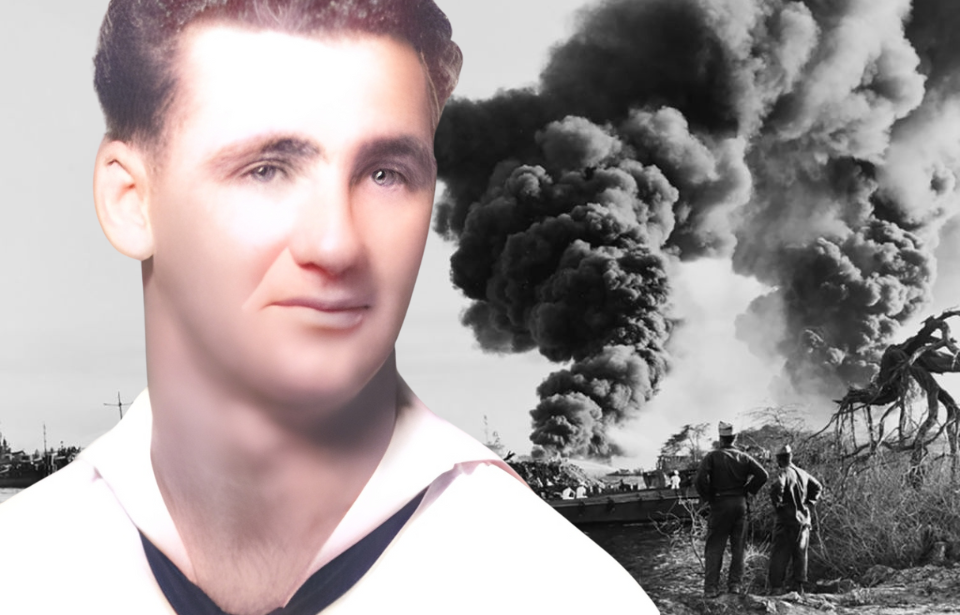
Throughout the Second World War, numerous individuals distinguished themselves through actions of great heroism. Some of them occurred in combat, while others happened on the home front. While participating in a salvage operation at Pearl Harbor, Francis P Hammerberg became one of those to risk his life for the safety of others – and paid the ultimate price. For his bravery, he was posthumously awarded the Medal of Honor.
Francis P Hammerberg enlisted in the US Navy
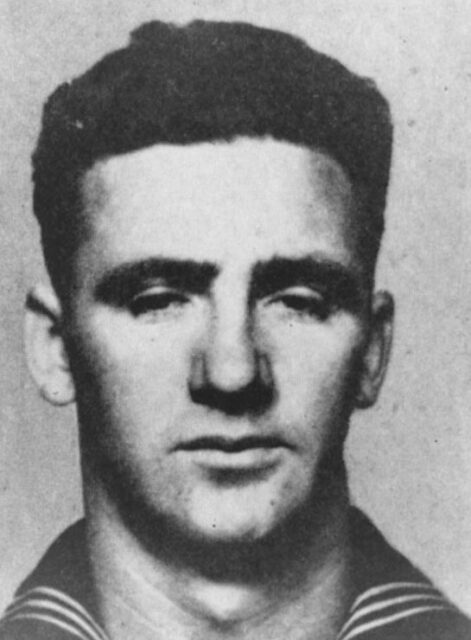
Francis P Hammerberg. (Photo Credit: Naval Historical Center Online Library / Wikimedia Commons / Public Domain)
Owen Francis Patrick Hammerberg was born on May 31, 1920, in Daggett, Michigan. After moving to Flint in his teenage years and dropping out of high school, he went out west, where he worked on a ranch.
In the summer of 1941, Hammerberg, then 21, enlisted in the US Navy. Following basic training, he was assigned to the battleship USS Idaho (BB-42), after which he served aboard the mine sweeper USS Advent (AM-83). While aboard the latter, he showed immense bravery by risking his own life to prevent a potentially fatal explosion. A cable had become tangled around a sea mine and he dove into the water to free it.
Following this action, Hammerberg was sent to the Deep Sea Diving School in Washington, DC, after which he was assigned to Mobile Diving Salvage Unit 1, Pacific Fleet Salvage Force.
West Loch Disaster
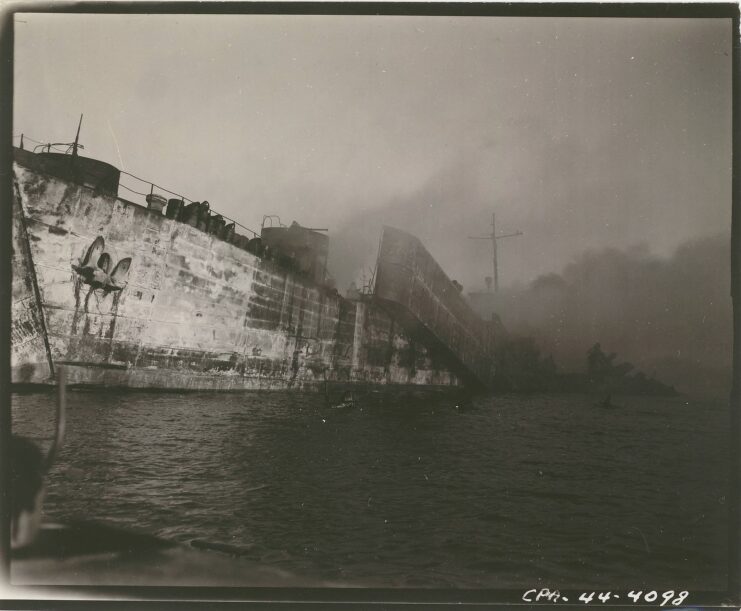
USS LST-39 following the West Loch Disaster. (Photo Credit: Watson01 / U.S. Army Signal Corps / Wikimedia Commons / Public Domain)
In February 1944, the West Loch at Pearl Harbor suffered a devastating event known as the West Loch Disaster. The site had been spared during the Japanese attack on December 7, 1941, and following the US entry into World War II it housed Navy and civilian ships, as well as large stores of ammunition, military supplies and fuel.
On May 21, 1944, several vessels, packed with ammunition and fuel for an upcoming mission in the Pacific Theater, were moored at the West Loch when disaster struck. One of these ships blew up (the reason why is still unknown), causing others in the area to also explode. To prevent the whole fleet from blowing up, the decision was made to sink the affected ships.
The West Loch disaster resulted in the deaths of 163 individuals, with 396 suffering injuries.
Salvaging crews were called in following the West Loch Disaster
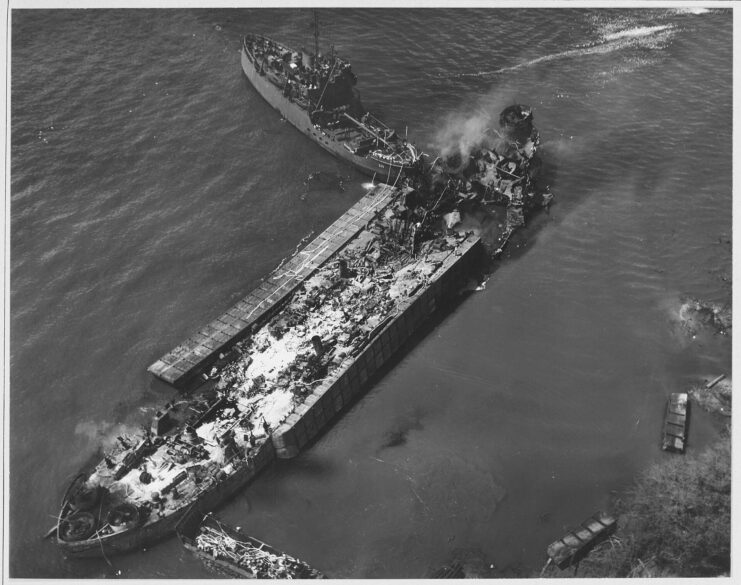
USS LST-480 following the West Loch Disaster. (Photo Credit: Unknown Author / Army Signal Corps Collection / US National Archives / Wikimedia Commons / Public Domain)
The next year, in February 1945, salvage diver teams were called to Pearl Harbor to raise the hulls of the sunken ships and clear the area. Francis P Hammerberg was among those called to the scene, and his team was able to raise their vessel without issue – but the same couldn’t be said for others.
While working on their assigned Landing Ship, Tank (LST), George Fuller and Earl Brown ran into trouble when heavy steel fell and trapped them. Their vessel was in 40 feet of water and 20 feet of mud, making it a dangerous situation for everyone involved.
Rescue attempts were done, which made the water around the vessel incredibly muddy, meaning sight was greatly reduced. This ultimately led to the calling off of additional attempts, with a call for volunteers being made. Hammerberg was among the sailors to answer the call.
After five hours of work, most of which was done in complete darkness, Hammerberg was able to free Fuller. Despite exhaustion setting in, he went back down for Brown. However, while moving through the wreckage another heavy piece of steel fell, landing on the boatswain’s mate and pinning him to Brown. While the latter survived the incident, the former was fatally injured, having spent 18 hours undergoing this perilous mission.
Francis P Hammerberg was awarded for his heroics
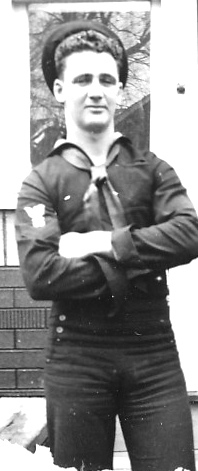
Francis P Hammerberg. (Photo Credit: U.S. Navy / U.S. Department of Defense)
For his efforts at Pearl Harbor in February 1945, Francis P Hammerberg was posthumously awarded the Medal of Honor – the last person to receive it for heroism outside of combat. Along with the distinction, his military service also saw him awarded the World War II Victory Medal, the Good Conduct Medal, the Asiatic-Pacific Campaign Medal and the American Defense Service Medal.
In 1955, a decade after his death, the destroyer escort USS Hammerberg (DE-1015) was named for the boatswain’s mate. The vessel served for nearly 20 years, during both Operation Argus (nuclear weapons and missile tests in the South Pacific) and the Cuban Missile Crisis.
More from us: The ‘Saving Private Ryan’ Detail Most Viewers Missed – It Changes Our View of the Film
Hammerberg has also received numerous honors in Michigan. Not only have a street and a playground been named for him in Flint and Detriot, respectively, but the Foreign Veterans of Wars (FVW) Post 3720 has since adopted his name. At present, his uniform and medals are on display at the Michigan Heroes Museum in Frankenmuth.





